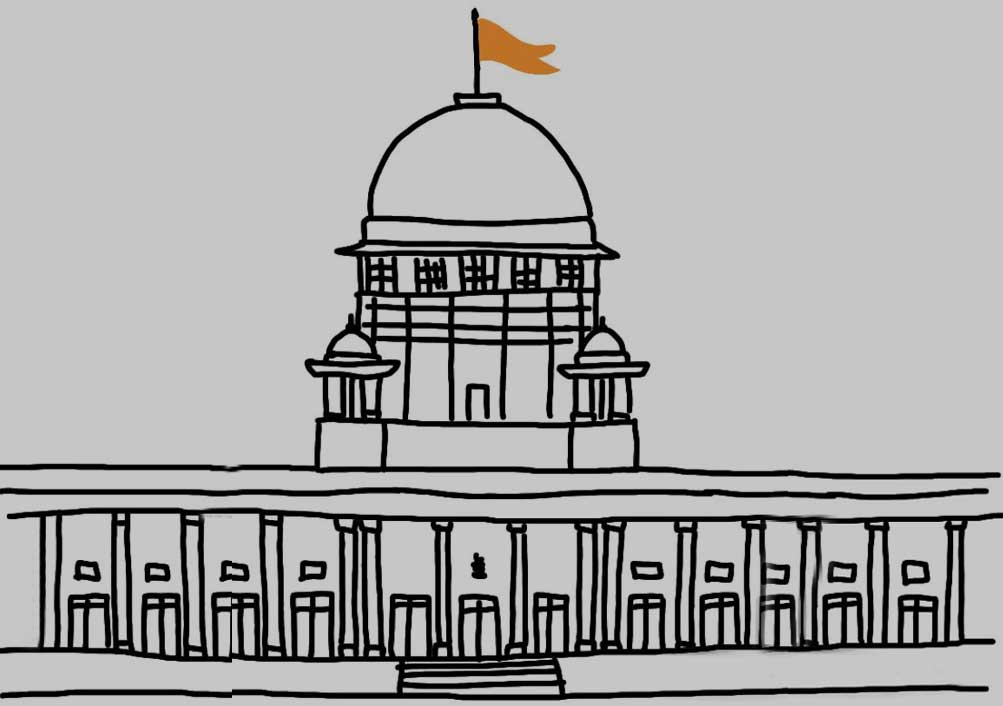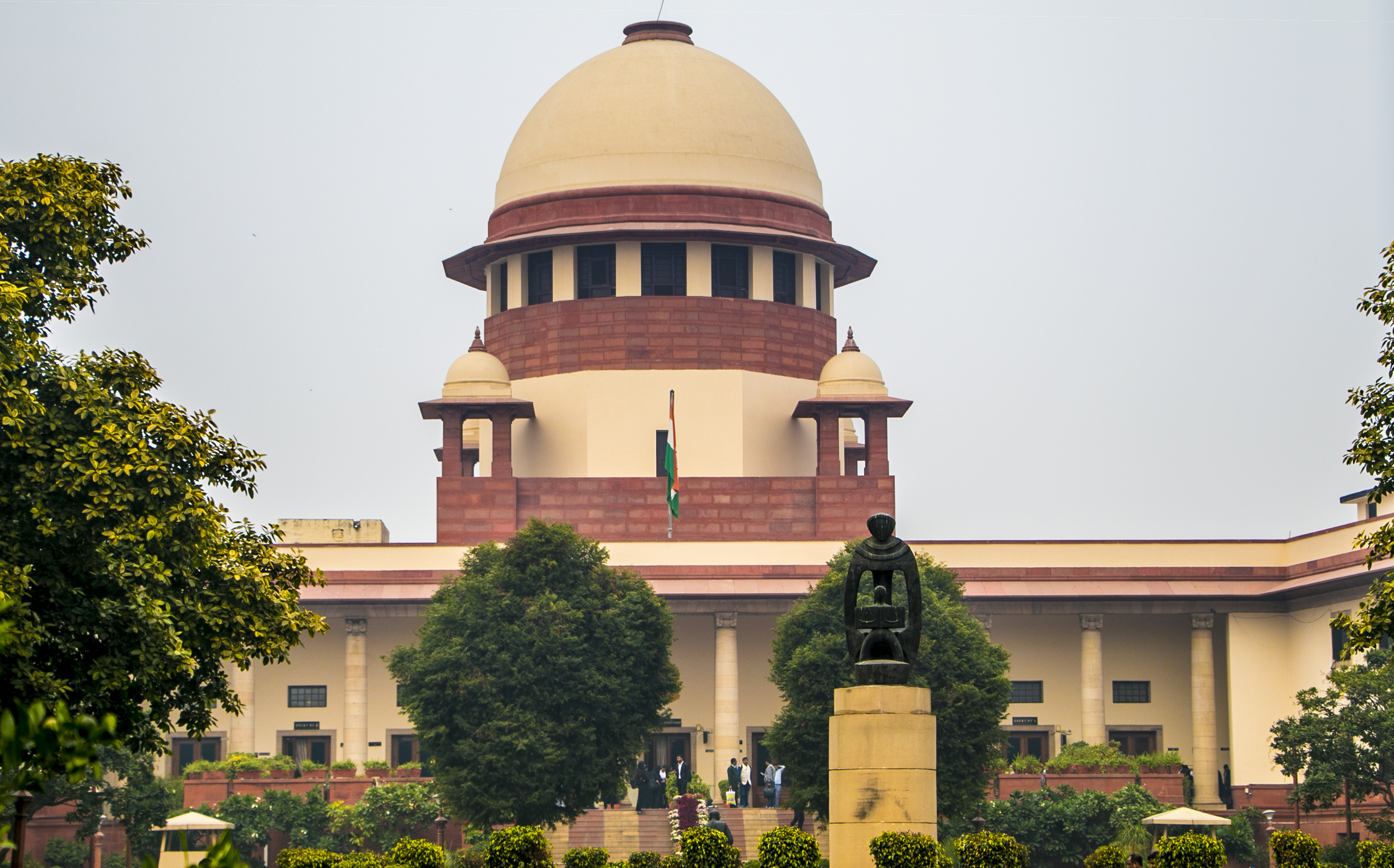IN CA 5107 OF 2022- SC- ‘The High Court seems to have completely misread provisions of National Highways Authority Act, 1956. It fell into error as it failed to apply the well settled principle of law that for construing a legal provision, the first and foremost rule of construction is the literal construction’: Supreme Court while setting aside Allahabad High Court order pertaining to land acquisition
Justice B.R. Gavai and Justice J.B. Pardiwala [07-07-2023]

Read More: Vinod Kumar v District Magistrate Mau
Simran Singh
New Delhi, July 10, 2023: Allowing an appeal against an order of the Allahabad High Court, the Supreme Court clarified that once any land was acquired under the National Highways Authority Act, 1956, the competent authority was obliged to pay an amount by way of compensation. The Top Court held that there was a procedure which has been prescribed under Section 3G of the Act, and sub-clause (5) of Section 3G makes it abundantly clear that if the amount determined by the competent authority under subsection (1) or subsection (2) of Section 3G was not acceptable to either of the parties, the amount would had to be determined by the arbitrator who may be appointed by the Central Government on the strength of an application by either of the parties.
The Top Court also noted that Section 3H provided that the amount determined towards compensation under Section 3G would have to be deposited by the Central Government in accordance with the rules and only then the possession of the land could be taken. Sub-clause (4) of Section 3H talked about apportionment of the amount which provided that if any disputes arose as to the apportionment of the amount or any part thereof, the competent authority was obliged to refer the dispute to the decision of the Principal Civil Court of original jurisdiction within the limits of whose jurisdiction the land was situated.
The Division Bench of Justice B.R. Gavai and Justice J.B. Pardiwala stated that the High Court seemed to have completely misread the provisions of the Act of 1956 and erred in their observation as it failed to apply the well settled principle of law that for construing a legal provision, the first and foremost rule of construction was the literal construction. “All that the Court has to see at the very outset is what does the provision state. If the provision is unambiguous and from the provision the legislative intent is clear, the Court need not call into aid the other rules of construction of statute. The other rules of construction are called into aid only when the legislative intent is not clear.”
In the matter at hand, the High Court had rejected the writ application filed by the appellants taking the view that the District Magistrate was competent to look into the legality and validity of the order passed by the Special Land Acquisition Officer (‘SLAO’) under Section 3G(5) of the (Act of 1956) which is under the challenge in the present case.
The dispute was regarding the acquisition of few parcels of land situated in the District Mau for the four lane widening of a National Highway 29. The appellants claimed higher shares in the compensation amount determined for the acquired land. The SLAO determined the shares of the compensation amount which was challenged before the District Magistrate. The District Magistrate set aside the order of the Special Land Acquisition Officer and remanded the matter. The appellants, however challenged this before the High Court on the ground that the District Magistrate neither had the jurisdiction nor did it give an opportunity of hearing before proceeding to pass the order granting higher shares in favour of the respondents towards compensation but the same was rejected.
The Bench observed that “….the first and foremost principle of interpretation of a statute in every system of interpretation is the literal rule of interpretation. The other rules of interpretation, for example, the mischief rule/ purposive construction, etc. can only be resorted to when the plain words of a statute are ambiguous or lead to no intelligible results or if read literally would nullify the very object of the statute. Where the words of a statute are absolutely clear and unambiguous, recourse cannot be had to the principles of interpretation other than the literal rule. The language employed in a statute is the determinative factor of the legislative intent. The legislature is presumed to have made no mistakes. The presumption is that it intended to say what it has said. Assuming there is a defect or an omission in the words used by the legislature, the Court cannot correct or make up the deficiency.”
The Court stated that there was a fine distinction between determining the amount to be paid towards compensation and the apportionment of the amount. The legislature had thought fit to confer powers upon the Principal Civil Court of original jurisdiction to determine the dispute arising as to the apportionment of the amount. “There is a reason, why the legislature has thought fit to confer such power to the Principal Civil Court of original jurisdiction within the limits of whose jurisdiction is land is situated…”
The Court stated that “The question of apportionment of compensation is not free from difficulties. In apportioning the compensation, the Court has to give to each claimant the value of the interest which he has lost by compulsory acquisition. So stated, the proposition may appear simple, but in its practical application numerous complicated problems arise in apportioning the compensation awarded. The difficulty experienced is due to the nature of a variety of interests, rights and claims to land which have to be valued in terms of money. The compensation awarded for compulsory acquisition is the value of all the interests which are extinguished and that compensation has to be distributed equitably amongst persons having interest therein and the Court must proceed to apportion the compensation so that the aggregate value of all interests is equal to the amount of compensation awarded. But in the valuation of competing interests, which from its very nature is dependent upon indefinite factors and uncertain data, considerable difficulty is encountered. Indisputably, in apportioning compensation the Court cannot proceed upon hypothetical considerations but must proceed as far as possible to make an accurate determination of the value of the respective interests which are lost. The Court must, in each case, having regard to the circumstances and the possibility of a precise determination of the value having regard to the materials available, adopt that method of valuation which equitably distributes the compensation between the persons entitled thereto”
The Court was of the view that the only general principle one could state was that apportionment under sub-clause (4) of Section 3H of the Act of 1956 was not a revaluation but a distribution of the value already fixed among the several persons interested in the land acquired in accordance with the nature and quantum of the respective interests. In ascertainment of those interests, the determination of their relative importance and the manner in which they could be said to have contributed to the total value fixed were questions to be decided in the light of the circumstances of each case and the relevant provisions of law governing the rights of the parties. The actual rule for apportionment had to be formulated in each case so as to ensure a just and equitable distribution of the total value or compensation among the persons interested in the land.
The Supreme Court observed that the District Magistrate did not have the jurisdiction to decide the apportionment of compensation. “We are of the view that when it comes to resolving the dispute relating to apportionment of the amount determined towards compensation, it is only the Principal Civil Court of original jurisdiction which can do so. Principal Civil Court means the Court of the District Judge.”
It was stated that according to Section 3H(4), any dispute regarding apportionment of compensation had to be referred to the Principal Civil Court of original jurisdiction within the limits of whose jurisdiction the land was situated. The competent authority possessed certain powers of the Civil Court, but in the event of a dispute of the above nature, the summary power, vesting in the competent authority of rendering an opinion in terms of subsection (3) of Section 3H, would not serve the purpose. The dispute regarding apportionment of the amount or any part thereof or to any person to whom the same or any part thereof was payable, would then had to be decided by that Court.
The Court held that determination of compensation amount and apportionment of the amount were two different things. While the competent authority determined the compensation amount, the apportionment of the amount had to be done by the Civil Court.
In view of the above, the Supreme Court quashed the order of the District Magistrate and directed the Special Land Acquisition Officer to refer the dispute regarding apportionment of compensation to the Principal Civil Court of original jurisdiction as per Section 3H(4) of the Act of 1956.
Sign up for our weekly newsletter to stay up to date on our product, events featured blog, special offer and all of the exciting things that take place here at Legitquest.




Add a Comment